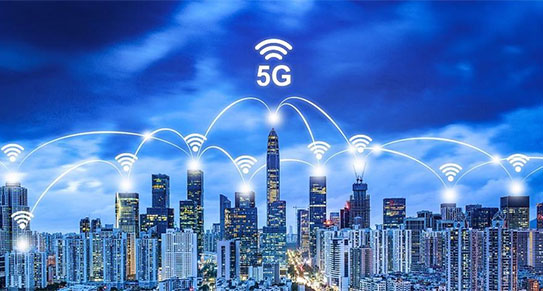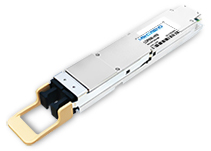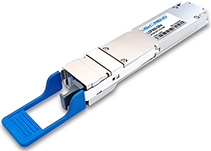ESPOO, Finland –
Nokia and Google Cloud partner to develop new, cloud-based 5G radio solutions
The two companies will develop 5G solutions combining Nokia's Radio Access Network (RAN), Open RAN, and Cloud RAN, with Google's edge computing platform
Building on recent partnership announced in February, new collaboration between Nokia and Google Cloud will deliver additional 5G monetization opportunities for CSPs
Nokia has today announced a partnership with Google Cloud to develop new, cloud-based 5G radio solutions. The two companies will collaborate on joint solutions combining Nokia's Radio Access Network (RAN), Open RAN, Cloud RAN (vRAN) and edge cloud technologies, with Google's edge computing platform and applications ecosystem. The collaboration will lead to the development of solutions and use cases to solve key 5G scenarios for businesses worldwide.
The initial collaboration, which is already underway at Nokia's Espoo headquarters, will pursue a number of different workstreams. The first, which will focus on Cloud RAN, will integrate Nokia's 5G vDU (virtualized distributed unit) and 5G vCU (virtualized centralized unit) with Google's edge computing platform, running on Anthos. Nokia's 5G standalone network with vCU and 5G core will also be tested on Google Cloud Anthos platform as a cloud-native deployment.
Today, global CSPs can unlock new monetization opportunities by driving 5G connectivity and advanced services to enterprise customers at the network edge, to deliver new, digital experiences for consumers. By leveraging its Open RAN and Cloud RAN leadership and combining it with best-in-class public cloud infrastructure from Google Cloud, Nokia is expanding its ecosystem of partners and helping CSPs lower deployment and operational costs, which is essential for monetizing 5G deployments. Both Nokia and Google Cloud will continue to develop the scope of these initial collaborations by exploring new technologies and solutions that will enhance their joint 5G Cloud RAN and edge cloud solutions.
Recognizing the performance demands of a 5G network, Nokia will also work to certify its Nokia AirFrame Open Edge hardware with Anthos. Nokia AirFrame Open Edge distributes computing capacity into the edge of the network and drives the implementation of Cloud RAN, Multi-access Edge Computing (MEC), as well as 5G.
George Nazi, Global VP, Telco, Media & Entertainment Industry Solutions at Google Cloud, said: "In the 5G era, we're committed to delivering solutions underpinned by world-class engineering that support our customers' requirements and help them to take advantage of 5G."
Bikash Koley, VP, Google Global Network and Head of Technology for Telecom Products at Google Cloud, said: "This partnership with Nokia will combine both of our decades of mobile communications expertise to deliver new solutions that help CSPs enable business transformation at the network edge."
Tommi Uitto, President of Mobile Networks at Nokia, said: "We are excited to develop new 5G solutions at the network edge with Google Cloud. Our service provider customers will benefit greatly from this collaboration with more choice and flexibility to efficiently deploy and orchestrate 5G networks. This will ultimately help our customers deliver 5G services on the network edge providing multiple options of cloud-based solutions paving the way forward."
Alex Choi, SVP, Strategy and Technology Innovation at Deutsche Telekom, said: "Deutsche Telekom is on a journey to transform to a new open, disaggregated and cloud-native infrastructure with an automated production model. We are therefore excited to see two innovative organizations like Nokia and Google Cloud joining forces to accelerate ecosystem innovation across critical areas like Open RAN and virtual RAN and the cloud-native 5G Core."
Ibrahim Gedeon, CTO, TELUS, said: "As we accelerate our digital transformation journey, we're pleased to see two leaders coming together who are committed to innovation in 5G. These new edge and convergence solutions coming out of the collaboration between Nokia and Google Cloud will help TELUS fuel a fundamental shift to digital across communications, healthcare, agriculture, and many other sectors—redefining how service is delivered in Canada and around the world."
Nokia and AWS to enable cloud-based 5G radio solutions
Collaboration to utilize Cloud RAN and Open RAN technology to develop new customer-focused 5G use cases
Nokia working with AWS to extend reach of Cloud RAN and Open RAN technology and accelerate 5G deployments
Nokia today announced that it has signed an agreement with Amazon Web Services (AWS) to research and enable Cloud RAN (vRAN) and Open RAN technologies to support the development of new customer-focused 5G solutions. The collaboration, which will be conducted at Nokia's facilities, aims to develop innovative proof of concepts (PoC) to explore and enable Cloud RAN and related technologies. Nokia is pursuing a strategy of collaborating with AWS to extend the reach of its Cloud RAN technologies in support of 5G deployments and the development of new use cases.
The initiative will see engineering teams from both companies research how the combination of Nokia's RAN (Radio Access Network), Open RAN, Cloud RAN and edge solutions can operate seamlessly with AWS Outposts. This collaboration will enable communications service providers (CSPs) and enterprises with 5G connectivity to utilize AWS across the topology of the mobile network. Operators will be able to simplify the network virtualization and platform layers for the Core and RAN network functions by leveraging the agility and scalability of cloud. This will also enable enterprises to achieve their desired business outcomes for new 5G use cases developed by AWS ISV Partners.
AWS offers its customers a comprehensive suite of on-demand cloud computing platforms and APIs on a pay-as-you-go basis. This collaboration will allow Nokia to leverage AWS services such as Amazon Elastic Compute Cloud (Amazon EC2), Amazon Elastic Kubernetes Service (Amazon EKS), AWS Outposts, AWS Local Zones, and other related services for automating network functionality, or end customer application deployment, scaling, and management.
The collaboration will cover three distinct areas. First, the project will focus on onboarding and validating Nokia's 5G vDU (virtualized distributed unit) on AWS Outposts using Amazon EKS for far edge cloud or on-premises deployments. The second area will examine the implementation of Nokia's 5G vCU (virtualized centralized unit) with AWS Outposts, AWS Local Zones, using Amazon EKS as a cloud native deployment. The third part of the collaboration will build a proof of concept for an end-to-end solution with Nokia's 5G Cloud RAN and 5G standalone Core network running on AWS, where end enterprise users can leverage 5G for use cases such an industrial application.
As part of this collaboration, Nokia will run AWS EKS Anywhere on the Nokia AirFrame Open Edge server. Nokia AirFrame Open Edge distributes computing capacity into the edge of the network and drives the implementation of Cloud RAN, Multi-access Edge Computing (MEC) as well as 5G.
Nokia is accelerating its Open RAN and Cloud RAN leadership by leveraging its advanced equipment portfolio and combining it with the cloud. By collaborating with AWS, Nokia aims to expand the ecosystem of partners and drive end user business outcomes essential for monetizing 5G deployments.
Dr. Alex Jinsung Choi, SVP Strategy & Technology Innovation, DT, said: "Deutsche Telekom is on a journey to transform to a new open, disaggregated, and cloud-native infrastructure with an automated production model. This collaboration which combines Nokia's leadership in 5G Open RAN and Cloud RAN with AWS's cloud platform capabilities and customer centricity can help to accelerate that journey. The expansion of cloud-native network functions and automation to the RAN will enable new agility and use-cases in the 5G era."
Dave Brown, Vice President, Amazon EC2, AWS, said: "This collaboration with Nokia will extend the reach of our industry-leading cloud technology to support our Telco and enterprise customers. We look forward to working closely on this collaboration and offer multiple deployment choices for customers to build 5G Cloud RAN and Open RAN solutions. Our customers will benefit from different options to run 5G RAN using AWS Outposts with either Intel or ARM-based CPU choices, or third-party bare metal servers while using Amazon EKS and EKS Anywhere. This will solve for the challenge of CI/CD, automation, and network orchestration by using a common framework of tools across Core and RAN."
Tommi Uitto, President of Mobile Networks at Nokia, commented: "This is a critically important collaboration and the continuation of Nokia's Cloud RAN leadership. At Nokia we are committed to supporting our customers and giving them the flexibility and elasticity they need on the network edge. We are building an ecosystem of public cloud partners that will ultimately support our customers and help them to build compelling 5G use cases."
Nokia partners with Microsoft on cloud solutions for enterprise
Nokia to integrate its Cloud RAN technology with Microsoft Azure
Nokia partnering with best-in-class cloud providers to leverage its Cloud RAN leadership and drive end-user 5G deployments.
Nokia today announced an agreement with Microsoft to develop new market-ready 4G and 5G private wireless use cases designed for enterprises. The collaboration will combine Nokia's Cloud RAN (vRAN) technologies with Microsoft Azure cloud-based services and developer ecosystem to drive end-user functionality via new business cases. The initiative supports Nokia's strategy of partnering with best-in-class public cloud providers to drive end-user business outcomes essential for monetizing 4G/5G deployments.
The project, which will run in three stages, will see Nokia combine its mobile network solutions including Cloud RAN, Open RAN, Radio Access Controller (RIC) and multi-access edge cloud (MEC) with the Azure Private Edge Zone. Azure Private Edge Zone enables data processing close to the end user, addressing ultra-low latency, high throughout 5G-based applications such as real-time robotics, mixed reality or immersive gaming. The initiative aims to achieve a better performance and end user experiences for third party app developers via the Azure ecosystem when exposed to the network.
Nokia will also integrate its 5G RAN with Azure 4G/5G core to demonstrate interworking to support enterprise use cases required by Microsoft's customers. Nokia's LTE/5G RAN in enterprise premises provides high performing and reliable connectivity to 5G enterprise use cases from the Azure 5G core and application ecosystem. Additionally, Microsoft and Nokia will explore further opportunities to incorporate Nokia Airframe Open Edge server as part of its telco edge strategy. Nokia AirFrame Open Edge server distributes computing capacity into the edge of the network and drives the implementation of Cloud RAN, Multi-access Edge Computing (MEC) as well as 5G.
The project highlights Nokia's strategy of partnering with public cloud providers. By leveraging its Open RAN and Cloud RAN leadership and combining it with best-in-class public cloud partners, Nokia is expanding its ecosystem of partners and driving end user business outcomes essential for monetizing 5G deployments. Both parties plan to explore additional areas in the future such as network slicing.
Tommi Uitto, President of Mobile Networks at Nokia, commented: "We are enthusiastic to work closely with Microsoft on this project that will harness Azure with our 5G radio network technology. Open collaboration is key to the development of new and innovative high value 5G use cases that will equip our customers with the tools they need for digital transformation. This is part of Nokia's continued commitment to leading an open mobile future, making it simple for our customers to take advantage of the 5G world helping to drive it forward."
Yousef Khalidi, Corporate Vice President, Azure for Operators at Microsoft Corp. added: "Microsoft believes in the importance of an open and interoperable ecosystem of solutions on the Azure carrier grade platform. Our collaboration with Nokia across multiple potential use cases, based on specific customer demand, will provide operators with choices on how the best adopt cloud technology in concert with their 5G updates to drive new revenue streams, reduce cost and future proof their network investment."








































 Date:2021-03-15
Date:2021-03-15







